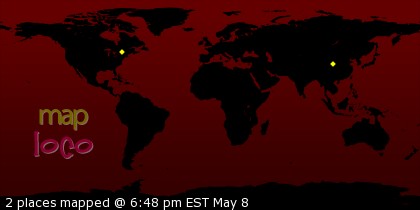Eleanor Arnason is right and I'm wrong. I can feel it in the back of my head, burbling away in that pot that I left sitting on the back burner. But I don't know why I'm wrong, or how to be right, so it's not the most helpful feeling.
At Wyrdsmiths last Thursday night, I suggested moving the start of a novel up a couple of scenes, to where the intrigue really kicks in: a character knocks at a doorway of a run-down, vacant looking storefront where they've been directed to find a strange organization. They end up waiting at the door, letting suspense build. I suggested starting there, then popping back to establish what happened to bring them to that point while the character is waiting, then re-establish the here and now moment when the door opens and they are drawn inside.
Eleanor stopped me and said she hates the use of the flashback, and that backstory should just be layered in as the story goes forward. My gut says that she is right, that relying on the flashback can be a cheap way out of a complicated situation, and the weaker option in creating a well-structured story. BUT...
...I don't know how else to do it, aside from straight up character recollection/exposition. I know that the audience will need certain information to understand what's going on, and to be introduced to certain characters, and to develop sympathy with the main character(s). Backstory is a well-established literary device. But sometimes that information isn't available outside the context of its own scene.
In a time-travel story, backstory can be established in the main flow, as the characters experience the jump in the time flow with the reader and are thus moving forward even as they replay the past. It's not so easy outside of that specific device, though, and I'd like to hear what our denizens have found effective in layering in backstory, either in your own work or in stories you've read. What works well, and what doesn't? And, if you'll share, why?
Subscribe to:
Post Comments (Atom)





5 comments:
The main reason I hate flashbacks is the old pulp insistence that a story start with a hook; later the author uses a flashback to explain why the hero was hanging on breaking branch just below a clifftop, with a tiger above him snarling. This kind of story actually starts before the cliff scene. The dramatic opening scene -- the hook -- is a cliche and not necessary, if you are able to write. Think of all the great mysteries that start with a client waking into the PI's office. Very dull, is it? Not when Raymond Chandler is doing the writing.
Think of all the Sherlock Holmes story that begin in the familiar comfort of 221B Baker St.
I start most Lydia Duluth stories with Lydia reaching a new planet. You get a tour of the setting, some backstory and then the action begins.
If you need a flashback -- rather than some simple filling in through conversation or the hero remembering -- it may well be a sign that the story actually begins earlier.
Further comment: It is always possible I am wrong about this. But I love the stories that begin with the client walking in...
No, I don't think you're wrong about it, Eleanor. I don't get the sense that it's a global rejection on your part, and in this case, I'm basically saying that I don't know HOW to do it better. It's a place I need to improve my craft.
That said, if I open a story and the hero is tied to a chair being interogated, I certainly want to keep reading. Doug's opening scene to AMONG THEIVES really works for me because of exactly that hook. There may, however, be extraordinary amounts of backstory that need to be filled in, and that's where I'm having trouble piecing out how to layer that in.
I suspect it's one of those things that people are more prone to when they first start out, as it is much harder for new writers to sell stories that get to the action in a slower manner.
On the other hand, Sean, if you want to echo those old pulp novels, the flashback structure might be useful, provided it's done skillfully and it's short.
Classic pulp structure is regaining popularity amongst the "straight" crime and thriller folk - so if your story has those elements, you could certainly take advantage.
Post a Comment